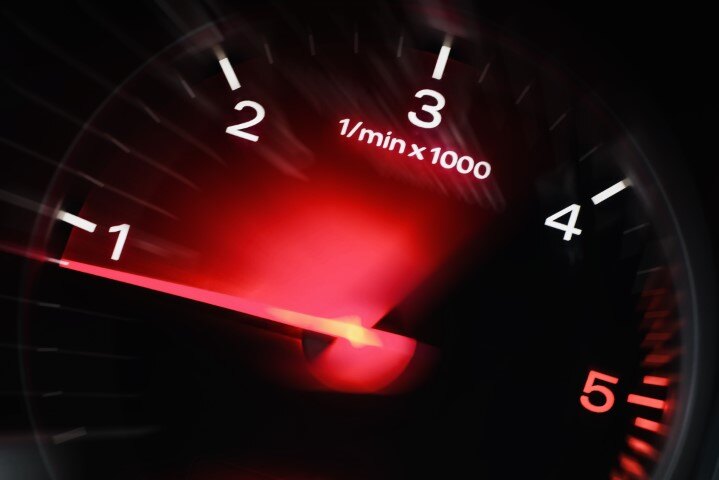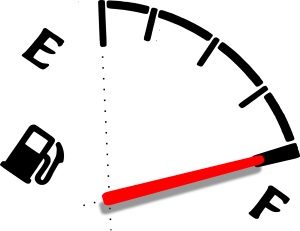Fuel Mileage Dropping? Blame The Winter Blend Gasoline
You may notice that your gas mileage has gone down a little bit in the past couple of months. Before we go blaming on ethanol (even though ethanol’s...

The new higher gas mileage requirements for cars and trucks that we mentioned on the Bell Blog a couple of months ago are now the law of the land. On August 28th the Obama Administration finalized writing new requirements into law that will double the average gas mileage standard for new cars and trucks by 2025.
 Rules like these always go into effect at some point in the future. So there's always a chance that future politicians go give in to pressure and roll back these requirements as being too strict. The better gas mileage requirements right now are that new cars and trucks sold this year have to have a minimum average gas mileage of just over 28 mpg. The new minimum will double this standard to 56 mpg (!) for new cars and trucks sold by the year 2025, just 12 years into the future (considering they're selling 2013 models right now).
Rules like these always go into effect at some point in the future. So there's always a chance that future politicians go give in to pressure and roll back these requirements as being too strict. The better gas mileage requirements right now are that new cars and trucks sold this year have to have a minimum average gas mileage of just over 28 mpg. The new minimum will double this standard to 56 mpg (!) for new cars and trucks sold by the year 2025, just 12 years into the future (considering they're selling 2013 models right now).
 This doesn't mean every model of vehicle will have to be better than 56 mpg. Whenever they report on these types of rules, they refer to a "CAFE standard" - the Corporate Average Fuel Economy. The CAFE rule was passed in 1975 in the wake of the oil embargo and dictates to car makers that the average of all their fleet of cars and trucks that they offer (excluding vehicles over 8,500 lbs) has to be over a certain minimum gas mileage. There are slightly different figures required for cars vs passenger trucks.
This doesn't mean every model of vehicle will have to be better than 56 mpg. Whenever they report on these types of rules, they refer to a "CAFE standard" - the Corporate Average Fuel Economy. The CAFE rule was passed in 1975 in the wake of the oil embargo and dictates to car makers that the average of all their fleet of cars and trucks that they offer (excluding vehicles over 8,500 lbs) has to be over a certain minimum gas mileage. There are slightly different figures required for cars vs passenger trucks.
 The CAFE standard has evolved over the years. In 1978, the standard was just 18 mpg. It rose to and stayed at 27.5 mpg for passenger cars all through the 90s and up to 2010. The Obama Administration, in keeping with its stated goal of reducing oil consumption, has accelerated this drastically, to heights that were not really considered reasonably ten or fifteen years ago.
The CAFE standard has evolved over the years. In 1978, the standard was just 18 mpg. It rose to and stayed at 27.5 mpg for passenger cars all through the 90s and up to 2010. The Obama Administration, in keeping with its stated goal of reducing oil consumption, has accelerated this drastically, to heights that were not really considered reasonably ten or fifteen years ago.
There are some loopholes in the standards designed to throw automakers a bone and not make their jobs completely impossible. As we just mentioned, the requirement is a fleet average. So an automaker can keep making SUVs with low mileage as long as they make enough small cars with high mileage efficiencies.
They can also qualify for "credits" against this high requirement by designing and selling vehicles that run on LPG or natural gas. They get credits, as well, for implementing certain technical innovations specified in the requirements - switching the vehicles to less-polluting air conditioning fluid and building in special circuits that cut off the engine at stop lights. Both innovations are designed to make those less-efficient vehicles more efficient, by force.
Depending on who you talk to, the change is good or bad. Environmentalists laud the new requirements to aid in reducing our energy consumption by forcing us to drive more efficient cars. The Obama Administration, with a stake in promoting its decision as a great thing, states the new standard will save drivers over $7,000 in gas over the life of their vehicle while cutting tailpipe emissions in half. People like to save money and there aren't many people who don't care about air quality, so those facts (if true) will appeal to many people.
On the negative side, all this forced innovation won't come free. The market may adjust but consumers will pay for the adjustment through built-in additions to the car's sticker price. So cars will get lighter, with smaller engines and less power, while costing more. Sometimes the market does surprise us, though, so who knows? Maybe automakers and designers will rise to the challenge and come up with something that meets the standards without feeling like you're driving a crackerbox with a couple of squirrels under the hood that you have to throw nuts to every so often.

You may notice that your gas mileage has gone down a little bit in the past couple of months. Before we go blaming on ethanol (even though ethanol’s...
Our automobile landscape is about to undergo a fundamental shift that will forever transform it. We’ve seen tipping points before - points where...

Back in 1975, if you bought a new car, you could expect its mileage rating to be about 13 mpg. And you were happy to have it, because you didn’t care...